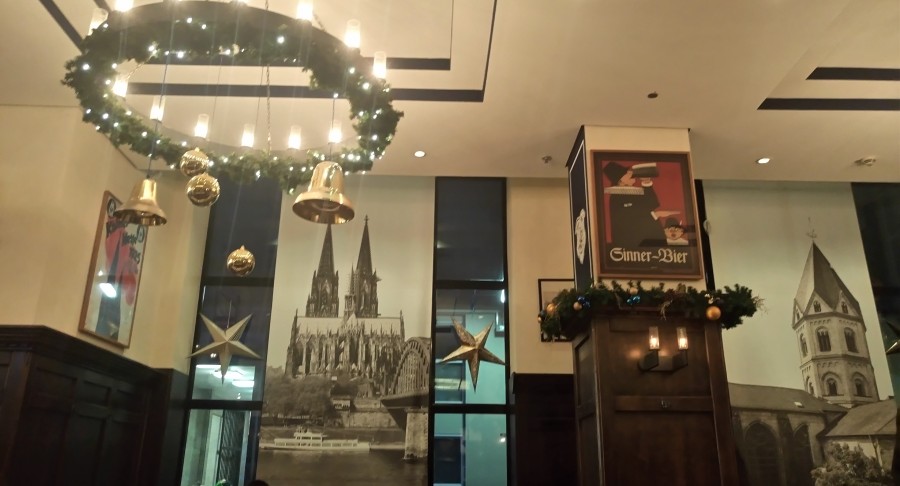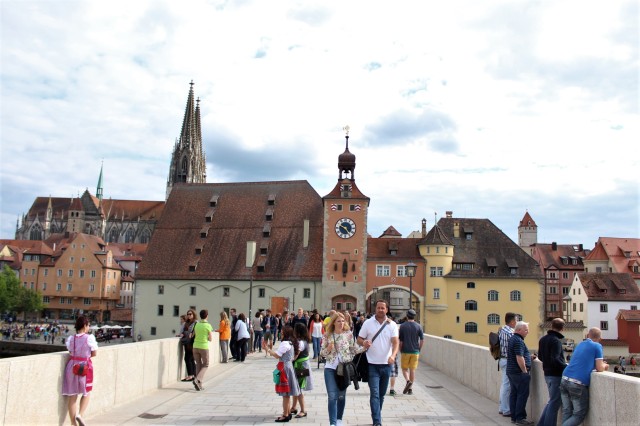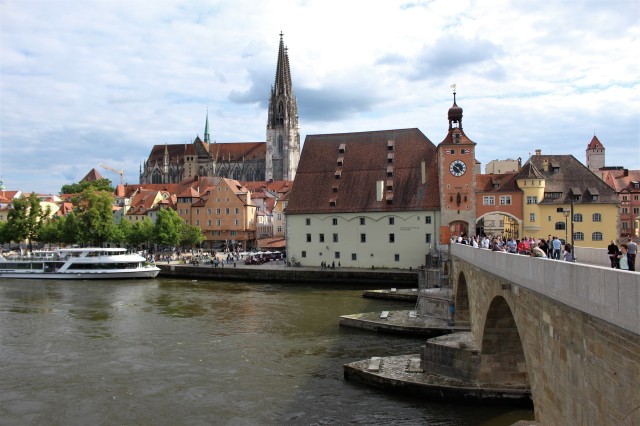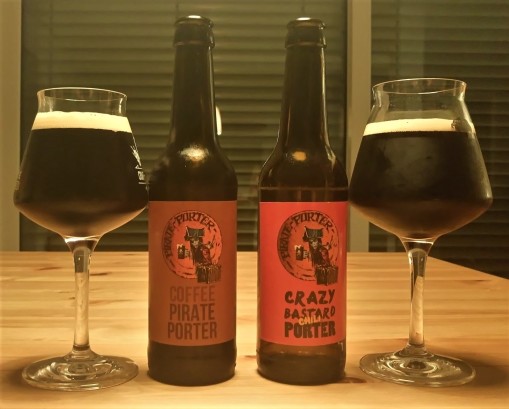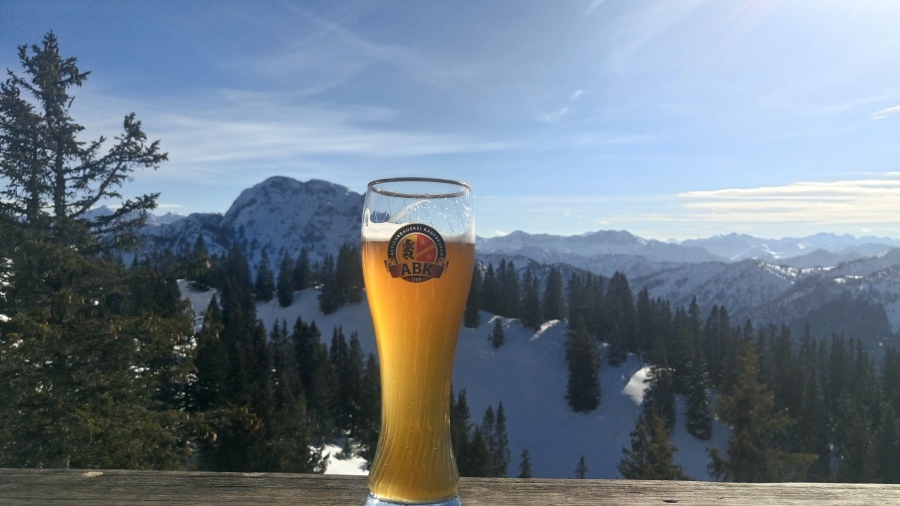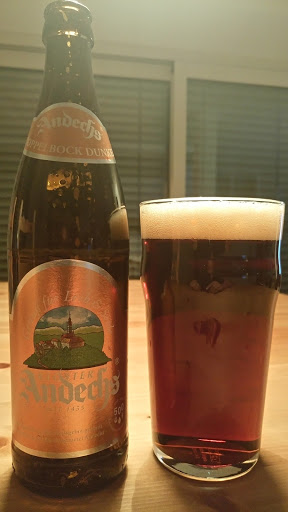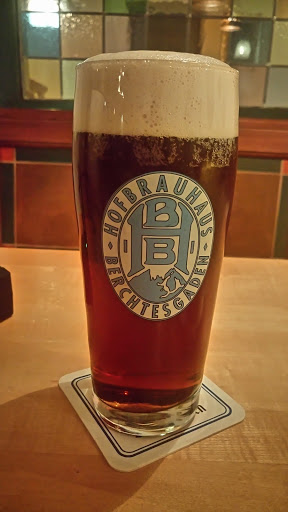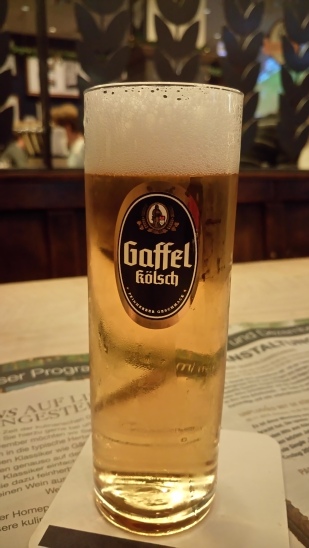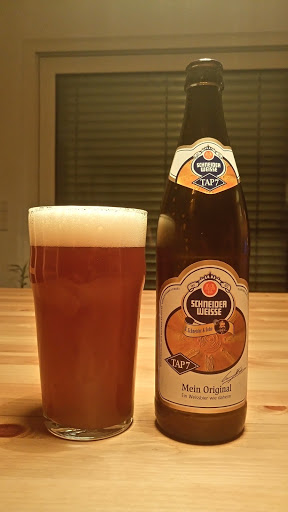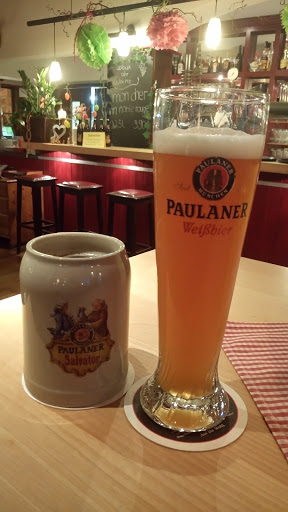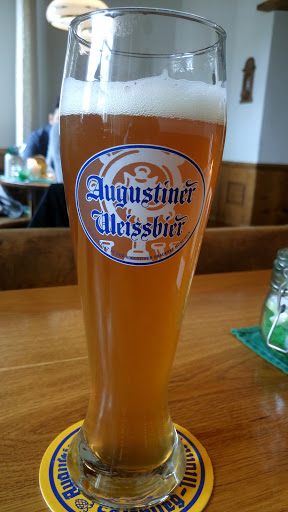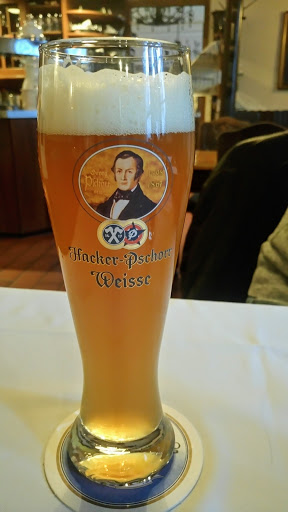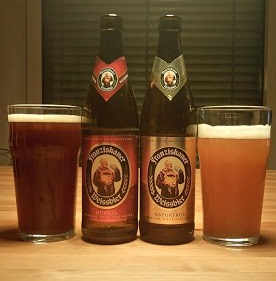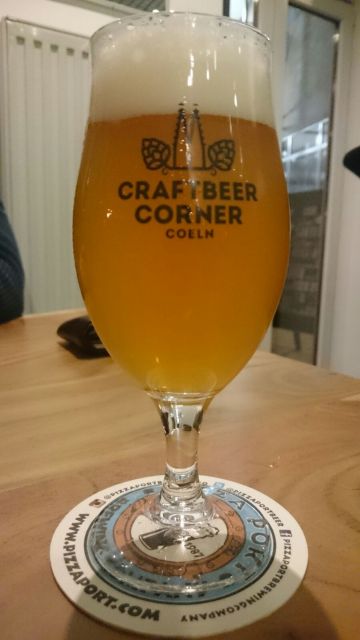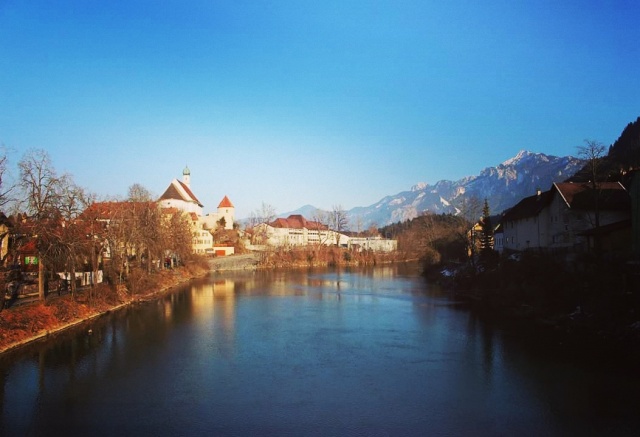Although most would identify Munich as Germany’s beer capital what with the Oktoberfest craze… for us, it would be Cologne.
Cologne is where we first explored the craft beer variety Germany has to offer. It is where we saw locals relish craft beer as much as they do the revered Kölsch.
We started our beer journey in Cologne with the Kölsch – it seemed like the right thing to do. And, we were not disappointed. If you’ve read some of the posts on this blog, you will know that we are not huge fans of the Pils. That said, we don’t mind drinking them on tap every once in a while. It is full of fresh flavors and the Pils generally have a nice hoppiness to it, admittedly not the pale ale hoppiness that we like but good enough to drink occasionally.
We had our first Kölsch at the Gaffel am Dom. The Kölsch to us was really just a German pils, just not as hoppy. However, the Kölsch by classification is an ale as it’s top fermented unlike a Pils. Notice how it is served in a small glass. Now, that’s typical for a Kölsch. Another typical and somewhat amusing custom is the server filling your glass the second it is empty without checking if you’d like more. This makes you completely lose track of how much you’ve drunk but at the same time, it’s pretty cool that you’ll never need to wait for a beer! After a quite a few Kölschs, we put our beer coasters on top of our glass which seemed to be the norm when you’d had enough.
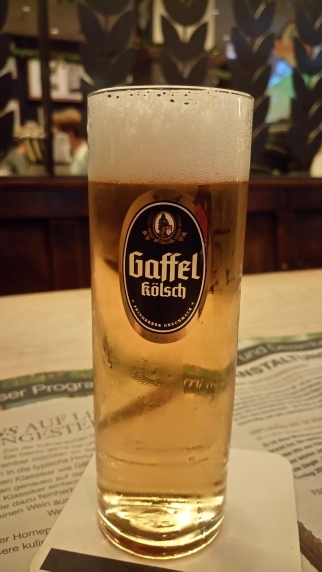
We were pleased to find that Gaffel brewed another style of beer – it was somewhat similar to the Kölsch yet different because of the hops and fruity flavors. Like the Kölsch, this beer didn’t look or taste like a typical lager or ale.. whatever it was, we liked it! The Sonnen Hopfen as the name itself indicates is full of summer flavors, bursting with citrusy freshness and juicy hops. Definitely, a must-try if you visit the Gaffel am Dom. It is the closest to a craft beer style in a traditional Brauhaus in Cologne.
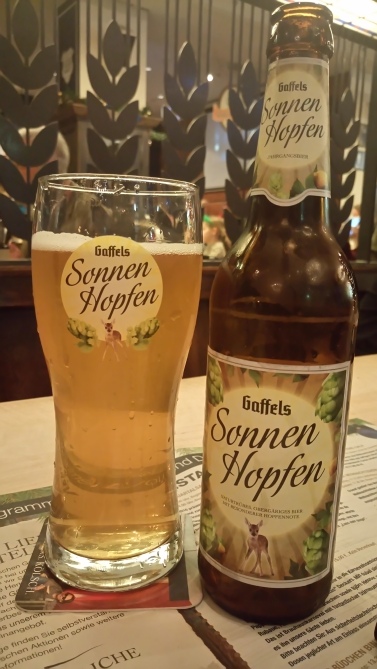
We had a delightful evening at the Gaffel am Dom – loved the food and the ambience. This is a place worth visiting for that authentic Kölner experience.
The night was still young and we headed over to the Metronom, a jazz bar. It’s a tiny place but a bar that plays some wonderful jazz music and serves an authentic Guinness on tap. It had been ages since we’d had a genuine pint of Guinness and were so happy to find one, of all the places in Germany.
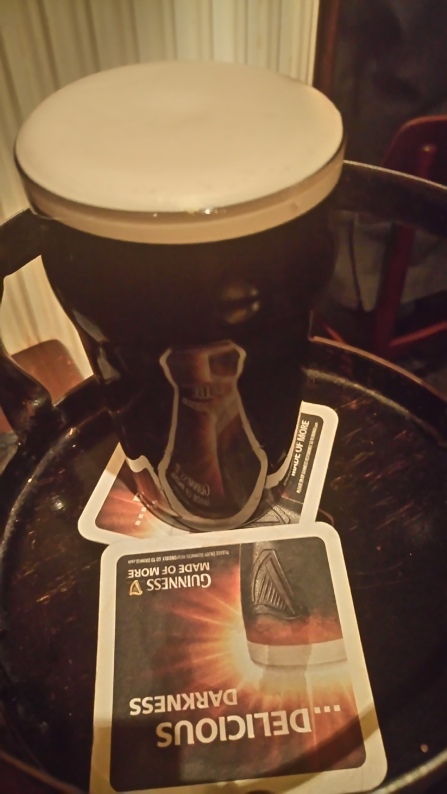
Metronom is a small place filled with locals and tourists. It gets crammed easily as it’s a small bar but just get there early and you can get a spot close to the bar. When we had visited, they had run into some trouble with the live music shows creating too much noise for the residents in the area and they had stopped the shows. But, we still listened to some great jazz music. They have the most amazing collection of vinyl records!
The next day we visited the Cologne Biermuseum. Although the place isn’t exactly a museum but more a bar with lots of great, old bier steins from all over Deutschland, Austria and other parts of the world. The place has a very cozy feeling to it and we kinda had the whole place to ourselves when we stopped by for some midday refreshments. Now, what’s notable about this place is that they have a huge variety of beers on tap, beers from all around the world and a bigger variety of bottled beers, mostly the traditional variety. The majority of the tap beers are Bocks and these are some pretty amazing bocks. We’ve had some of our best bocks in all of Germany at this little bar.
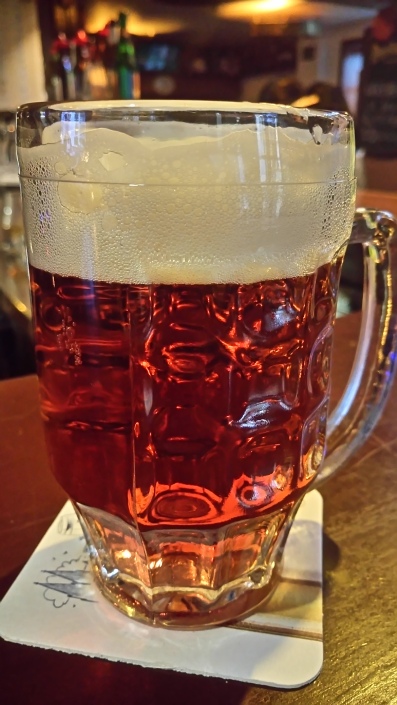
If you are a beer fanatic and especially one that loves Bocks, this place should definitely be part of your Cologne beer adventures.
Later that evening, we made our way to the Braustelle microbrewery in Ehrenfeld. These guys have a great set of beers on tap. Of course, they have their own Kölsch – the Helios. It’s one of the best Kölschs we had in all of Cologne. Braustelle has a great set of craft beers to suit all sorts of palettes. We weren’t too fond of their fruity Pink Panther ale but loved some of their stouts. They are always brewing new stuff and you’ll find their menu changing ever so often. It’s a great place where the craft beer loving locals get together. A must-visit if you are a beer enthusiast.
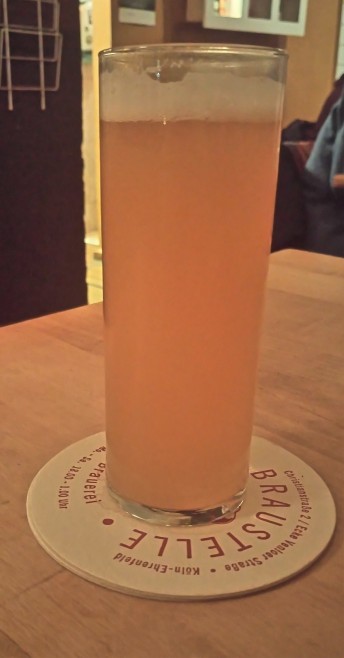
The next day we did a short trip to Bonn. It’s a university town that’s possibly most famous for being the birthplace of Beethoven and home to the United Nations German HQ. Incidentally, it’s where Steve worked while he lived in Bonn several years ago. More about Bonn in a separate post. On to the beers in Bonn – like Cologne they have their own brand of beer called the Bönnsch of course. Interesting point to note: Kölsch and Bönnsch are also what the local dialects are referred to for the respective cities.
While the Kölsch is served in a small glass, the Bönnsch is served in a very unique looking pint glass.
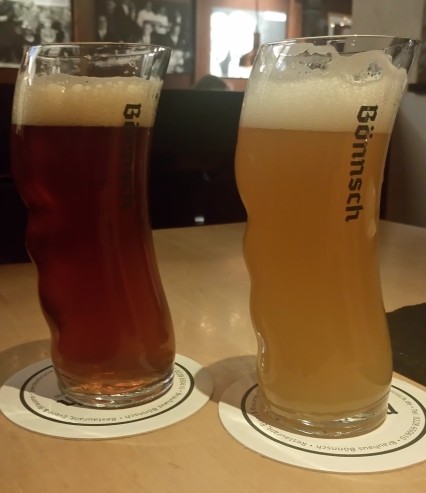
The lighter (helles in German) beer is their classic, all-time brew – the Bönnsch Natürlich. It’s similar to the Kölsch yet couldn’t be more different. The darker brew you see is their Winter Bock – we quite liked this one! This, of course, is available only during the winter months. The Bönnsch beers are a creation of the Brauhaus Bönnsch which is a fantastic place to grab some delicious local bites and beers.
Later that afternoon, we headed back to Cologne and were quite excited about our evening plans. Not only were we meeting an old friend/roommate of Steve’s after nearly a decade, but were also planning on visiting Cologne’s kick-ass craft beer bar.
We started off the evening at the Päffgen Brauhaus. It’s a traditional beer hall atmosphere and is a fairly large place. They also have a nice winter beer garden that is covered and not too cold. After several rounds of Kölschs and some very tasty local food, we decided to get to the spot we’d been saving for the last.
Craft Beer Corner Coeln is one of the best craft beer bars in Germany. It is mostly filled with local folk who love their craft beers. They have 15 taps on rotation – beers include German and international craft. And they have a whole bunch more by the bottle. It is important to note that when we had visited Cologne in Dec 2016, we were living in Ulm, a small town in South Germany. The craft beer culture at that time was pretty much non-existent and we were always on the hunt for craft beers. [The scene today though is hugely different. More on this in a separate post!] So, essentially, you can imagine the palpable excitement in the air when we walked into this bar to find this mind-blowing collection of beers.
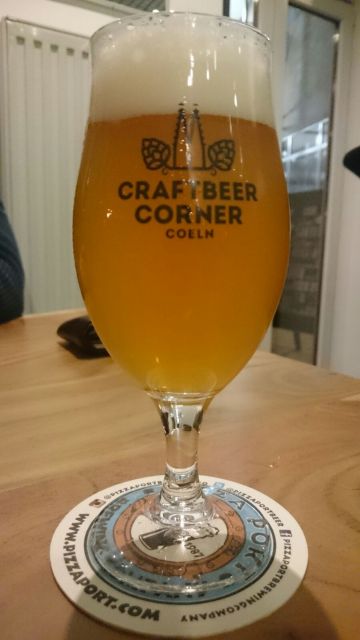
It turned out to be a long night of fun conversations over some hoppilicious beers. Also, we got our Pils loving German friend to try out a whole bunch of hoppy ales. Although he didn’t really develop a liking for the ales, he did enjoy the stouts quite a bit.

If you are a serious beer drinker and find yourself in and around Cologne, you should definitely visit the Craft Beer Corner. It is one of the very few places in Germany where you get such a varied and huge collection of craft beers. We promise you, you will feel like you’ve finally come home at Craft Beer Corner Coeln. And, if you’re an IPA lover, you will be in hop heaven with their horde of great IPAs!
And, that’s how we began our Christmas beercation. Next stop Belgium. Stay tuned for our beer adventures in the holy land of beers.

